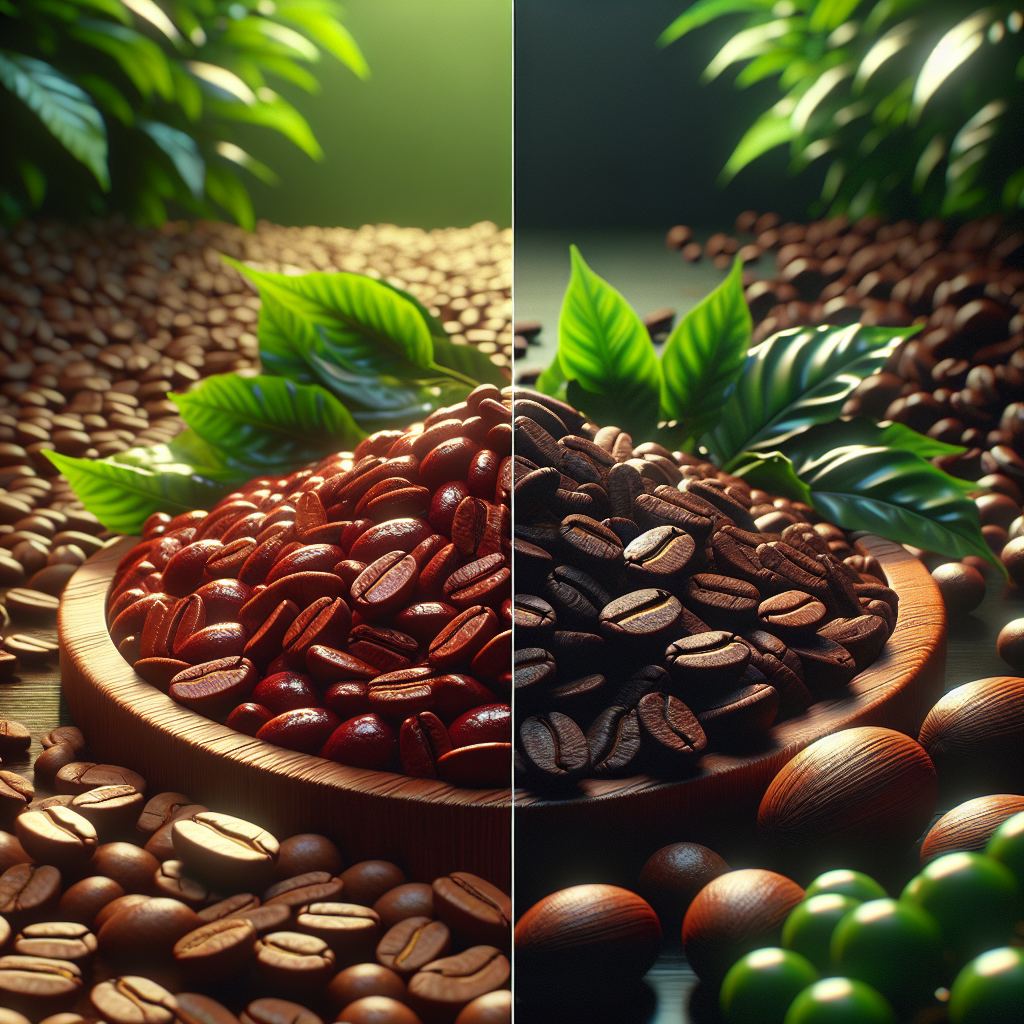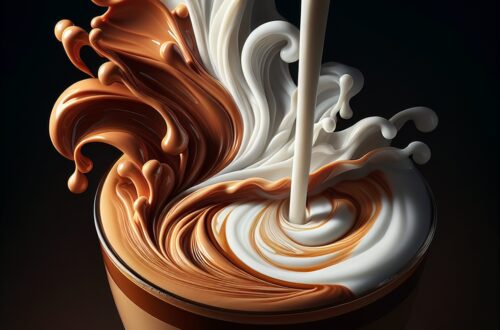“`html
Understanding the Differences Between Arabica and Robusta Coffee Beans: A Comprehensive Guide
##1. Species Classification: Coffea Arabica vs. Coffea Canephora
| Feature | Coffea Arabica | Coffea Canephora (Robusta) |
|---|---|---|
| Origin | Originates from Coffea arabica plant | Comes from Coffea canephora plant |
| Production Share | 60-70% of global coffee production | 30-40% of global coffee production |
| Species Lineage | Considered the older lineage | Discovered later, known for robustness |
| Shape | Oval-shaped | Circular |
| Color | Lighter in color | Darker |
| Hardiness | More susceptible to diseases | Hardy and resistant to harsh conditions |
When discussing coffee, the spotlight often falls on the two major species: Coffea Arabica and Coffea Canephora (commonly known as Robusta). Originating from the Coffea arabica plant, Arabica coffee beans are considered the older lineage of the coffee species. On the other hand, Robusta beans come from the Coffea canephora plant, known for its resilience and robustness.
##2. Caffeine Content: A Tale of Two Beans
Robusta beans contain significantly more caffeine compared to Arabica beans, approximately 2.7% versus Arabica’s 1.2%. This higher caffeine content in Robusta contributes to its stronger and more bitter flavor profile, while Arabica’s moderate caffeine level provides a smoother and less bitter taste. Caffeine acts as a natural pesticide, which explains Robusta’s hardiness and resistance to pests.
##3. Flavor Profile and Taste Differences
The flavor profile is one of the distinct factors differentiating Arabica and Robusta beans. Arabica beans are celebrated for their sweet, complex flavor, often with fruity and winey notes. The nuanced flavors of Arabica include hints of chocolate and nuts, contributing to a smooth finish. Conversely, Robusta is known for its bold, earthy flavor, often described as more bitter and less nuanced.
##4. Aroma and Acidity: Sensory Experiences
Regarding aroma and acidity, Arabica coffee is notably aromatic with a developed and pleasing scent, while Robusta has a more pungent and less desirable smell. Arabica beans also present higher acidity, contributing to their vibrant taste, whereas Robusta’s lower acidity offers a flatter and heavier taste. This sensory experience makes Arabica a favorite for those seeking a well-balanced and aromatic cup of coffee.
##5. Bean Shape, Appearance, and Composition
Arabica and Robusta can also be visually distinguished. Arabica beans are typically oval-shaped and lighter in color, while Robusta beans tend to be more circular and darker. Arabica contains about 60% more sugars and fats (lipids) than Robusta, enhancing its smooth, sweeter taste. Robusta beans have a higher chlorogenic acid content, contributing to their bitterness.
##6. Cultivation, Climate, and Resilience
The cultivation and climate preferences of Arabica and Robusta beans are crucial to their growth and flavor. Arabica coffee thrives in high-altitude regions with cooler climates, such as Brazil, Colombia, and Ethiopia. Robusta beans prefer lower altitude areas with hotter climates and are more resistant to harsh conditions. This hardiness makes Robusta easier to grow and less costly in terms of cultivation.
##7. Yield, Market Demand, and Pricing
Yield and market demand significantly impact the pricing and availability of these coffee beans. Arabica plants tend to have lower yields due to their vulnerability to diseases and pests, whereas Robusta plants produce higher yields. As a result, over 60% of the world’s coffee production consists of Arabica beans, commanding higher prices due to their superior taste. Robusta accounts for the remaining 40% and is often cheaper, used to balance the cost in coffee blends.
##8. Practical Usage and Consumer Preferences
Consumer preferences and practical usage influence the market trends for Arabica and Robusta coffee beans. Arabica is favored among specialty coffee shops and premium brands for its nuanced flavor and aromatic qualities, appealing to coffee aficionados. On the other hand, Robusta’s bold taste, affordability, and ability to produce crema in espresso make it popular for instant coffee and espresso blends. Blending Arabica and Robusta can balance flavor complexity and cost, offering diverse coffee experiences.
Understanding these differences helps coffee enthusiasts and consumers to make informed decisions based on their taste preferences and desired coffee experience. For more insightful coffee FAQs, visit our comprehensive coffee FAQ section here.
“`
Shop at Breville now!
https://breville.oie8.net/oqDqrE
Shop Coffee Machine at Amazon now!
Click here!





